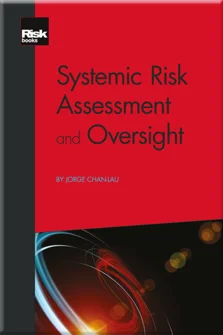Systemic Risk Measurement: Statistical Methods
Why Systemic Risk Oversight Matters
The Bottom-up Approach to Systemic Risk
Fundamental Information and Firm-level Risk
Extracting Risk Measures from Credit Derivatives and Bonds
Equity-implied Methods and Risk-neutrality Transformations
Systemic Risk Measurement: Statistical Methods
CoRisk: Quantile Regressions in Practice
Balance-sheet Network Analysis
The Portfolio-based Approach to Systemic Risk
The Regulation of Systemic Risk
This book proposes a bottom-up approach for systemic risk measurement, building on risk assessment at the individual institution level and aggregating it at the system-wide level using credit risk portfolio techniques. This approach helps to develop economic intuition by focusing attention on the potential drivers of risk at the institution level, and on the linkages, either direct or indirect, that could amplify a negative shock and bring the financial system to a standstill.
However, in some cases it may suffice to construct simple systemic risk measures and indicators that do not necessarily involve extensive data gathering, too much data manipulation or applying theories of financial economics. These relatively simple statistical measures and indicators are useful for monitoring changes in systemic risk. For instance, the potential for shocks to spill over across different institutions could be captured by analysing changes in the correlations of their equity returns, the credit default swap spreads referencing them and/or the risk measures described in Chapters 3–5.
This chapter will describe a number of simple methods for constructing systemic risk measures and indicators
Copyright Infopro Digital Limited. All rights reserved.
As outlined in our terms and conditions, https://www.infopro-digital.com/terms-and-conditions/subscriptions/ (point 2.4), printing is limited to a single copy.
If you would like to purchase additional rights please email info@risk.net
Copyright Infopro Digital Limited. All rights reserved.
You may share this content using our article tools. As outlined in our terms and conditions, https://www.infopro-digital.com/terms-and-conditions/subscriptions/ (clause 2.4), an Authorised User may only make one copy of the materials for their own personal use. You must also comply with the restrictions in clause 2.5.
If you would like to purchase additional rights please email info@risk.net










